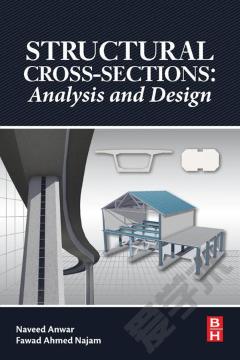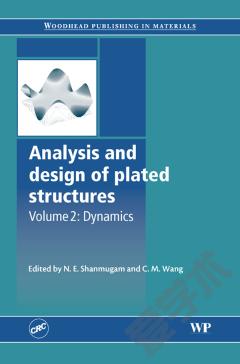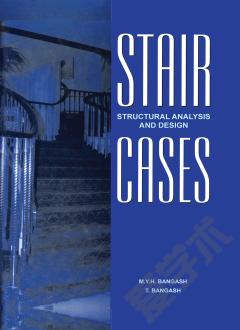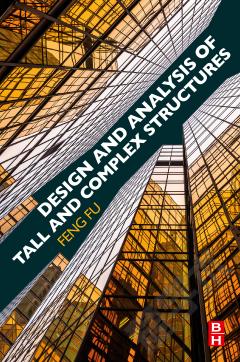Structural Cross Sections —— Analysis and Design
----- 结构截面:分析与设计
Structural Cross Sections: Analysis and Design provides valuable information on this key subject covering almost all aspects including theoretical formulation, practical analysis and design computations, various considerations and issues related to cross-sectional behavior, and computer applications for determination of cross-sectional response. The presented approach can handle all complex shapes, material behaviors and configurations. The book starts with a clear and rigorous overview of role of cross-sections and their behavior in overall structural design process. Basic aspects of structural mechanics are reviewed and procedures to determine basic cross-sectional properties, stress and strain distributions, stress resultants and other response parameters, are provided. A brief discussion about the role of material behavior in cross-sectional response is also included. The unified and integrated approach to determine axial-flexural capacity of cross-sections is utilized in development of P-M and M-M interaction diagrams of cross-sections of various shapes. The behavior and design of cross-sections subjected to shear and torsion is also included with emphasis on reinforced concrete sections. Several detailed flow charts are included to demonstrate the procedures used in ACI, BS and Euro codes for design of cross-section subjected to shear and torsion, followed by solved examples. The book also presents the discussion about various factors that can lead to ductile response of cross-sections, especially those made of reinforced concrete. The definition and development of action-deformation curves especially moment-curvature (-) curve is discussed extensively. Various factors such as confinement, rebar distribution and axial load effect on the ductility are shown through examples. The use of moment-curvature curve to compute various section response parameters is also explained though equations and examples. Several typical techniques and materials for retrofitting of cross-sections of reinforced concrete beams, columns and slabs etc. are reviewed. A brief discussion of various informative references related to the evaluation and retrofitting of structures is included for practical applications. Towards the end, the book provides an overview of various software applications available for cross-section design and analysis. A framework for the development of a general-purpose cross-section analysis software, is presented and various features of few commercially available software packages are compared using some example cross-sections.Presents a generalized procedure to compute axial-flexural capacity of cross-sections of any number and configuration of materialsHeavily illustrated with schematics, diagrams, and line drawingsIncludes the convenient approach to develop P-M interaction, M-M Interaction and Moment-Curvature relationships for reinforced concrete cross-sectionsProvides detailed flowcharts for code-based (ACI, BS and Eurocode) design of reinforced concrete cross-sections subjected to axial-flexural actions as well as shear-torsion.Presents formulae and expressions to compute various commonly used cross-sectional properties of common section shapesDiscusses various parameters affecting the ductility of cross-sections and the role of confinement in the behavior reinforced concrete cross-sectionsReviews various practical retrofitting techniques to rehabilitate the damaged cross-sectionsCovers the concepts discussed in main text using various solved and unsolved numerical examplesPresents an overview of various computer applications and packages available for analysis of cross-sectionsSupported by author-developed computer-based apps to be used in conjunction with the practical applications presented in the book
{{comment.content}}








 京公网安备 11010802027623号
京公网安备 11010802027623号